
List of works commonly performed on trees:
i) Crown cleaning: Removal of damaged, dead or diseased wood, pruning out of crossing branches and removal of any hanging branches. A basic requirement for the health of the tree, and usually carried out as a matter of course as part of any larger works being done within the canopy of the tree.
ii) Crown thinning: Removal of branches from within the canopy of a tree. The effect is to reduce the thickness of the canopy whilst not having (much of) an effect on the actual diameter of the crown. Useful where there is excessive damp and darkness under the tree: Allows more air to flow through the canopy.
iii) Crown reduction: Removal of selected branches from the outer sections of the canopy. The effect is to reduce the overall diameter of the crown of the tree. Useful where the branches are becoming overly long, resulting in a large shaded area. Also Often used where branches are hanging over into neighbouring properties.
iv) Crown lifting: As you'd expect - removal of the lower limbs from a tree. Often performed to aid grounds maintenance (allowing the passage of people and mowers etc. underneath). Can also be considered on an aesthetic basis and results in a less cluttered feel to the area in which the tree grows.
v) Pollarding: A very old practice mostly seen on certain species' of tree - notably limes, willows, sycamores and planes - and especially common on these when street trees. This involves regular heavy pruning back to established points on the main limbs producing 'knuckles' from which new growth sprouts in profusion. For trees that quickly produce growth in profusion such as those mentioned, it is often the most sensible pruning regime. The pollarding cycle can be anywhere between yearly and perhaps every five years.
vi) Coppicing: Severe pruning back towards ground level. Certain broadleaved species are such vigorous growers that they will come again repeatedly from the stump that is left when they are cut right back close to the ground. Results in bush-like thick growth that, as with pollarding, will normally be performed on a cycle. Rarely used in modern gardens, but worth noting.
vii) 'Topping': Something of a dirty word in the industry - don't get the arboriculturalists started on this one! This is the cutting of the trunk(s) in the upper portions of a tree. It results in large wounds, possible weak unions in future growth, and can give the tree something of an odd shape until the new growth comes through and perhaps even thereafter. It is however best to be pragmatic: It can be very destructive to some broadleaves but frequently it is the only sensible course of action on neglected conifers, and observation has shown that the species' on which it is commonly required tend to cope with it well. Basically - if it's a sensible solution in a given situation then I will suggest it. Topped trees sometimes need inspection a few growing seasons after being cut to check on their progress.
viii) Straight Felling: To remove the tree to ground level, or just above, in one fell swoop. Results in the whole tree lying on the ground - so obviously not an option in gardens with insufficient space. In such circumstances it will be required to carry out the far more involved and time consuming...
ix) Section Felling: To remove the tree to ground level, or just above, in stages. Normally removing limbs progressively from the ground upwards, and then the main trunk from the top downwards. The only safe option in many smaller gardens, or at any site where the area around the tree to be removed is obstructed. Larger branches and trunk sections may have to be lowered on ropes to control their descent.
Pricing
Workmen sometimes seemingly unhelpfully say 'I'll have to see it to price it' and that is certainly true of tree works. Owner descriptions, no matter how intricate just don't provide a sufficient picture of the tree, the site, access or other difficulties involved. People commonly underestimate the cost of having their trees worked on or removed. Good tradesmen often have extra costs over and above some of their uncertified competitors and such is the case with arboriculture. Potential pitfalls of employing such workers are lack of insurance, lax safety policies, contravention of local planning regulations and illegal dumping of waste.
Prices reflect a mixture of:
i) The number of workers required.
ii) The total man-hours likely to be involved.
iii) The level of danger involved. Large trees in confined areas, or any work on
severely damaged or rotten trees can be
particularly expensive.
iv) The tools/machinery/rigging required.
v) Ease of removing waste from the site.
vi) Volume/weight of waste: It has become expensive to dump waste.
Below are some examples of different works:
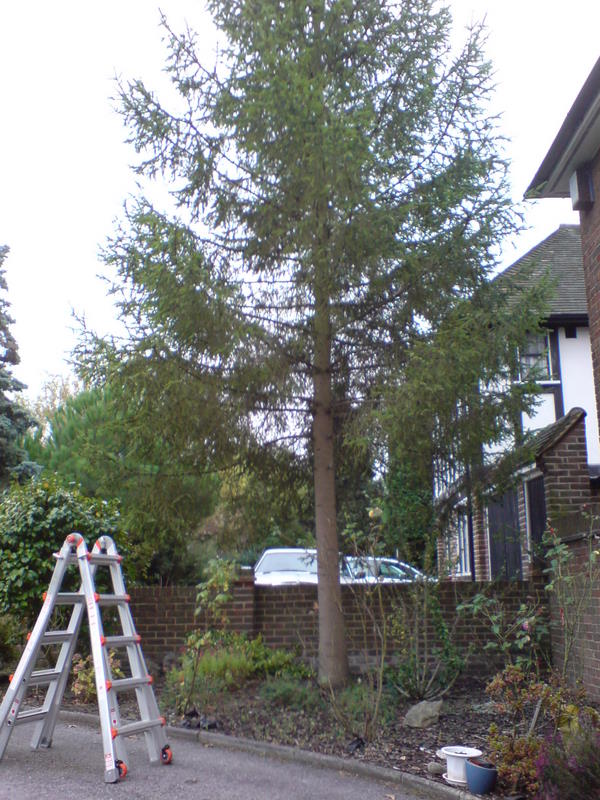
| Spruce 25ft Felled to ground £250 | 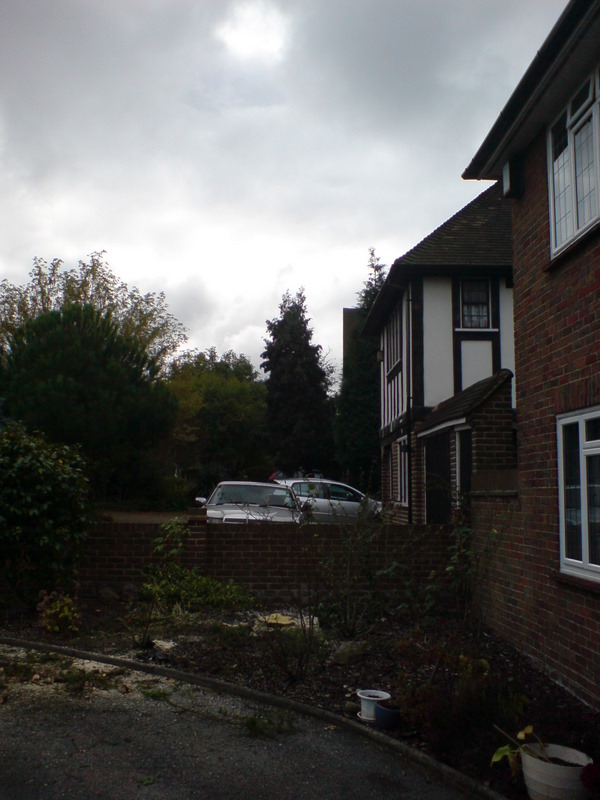
|
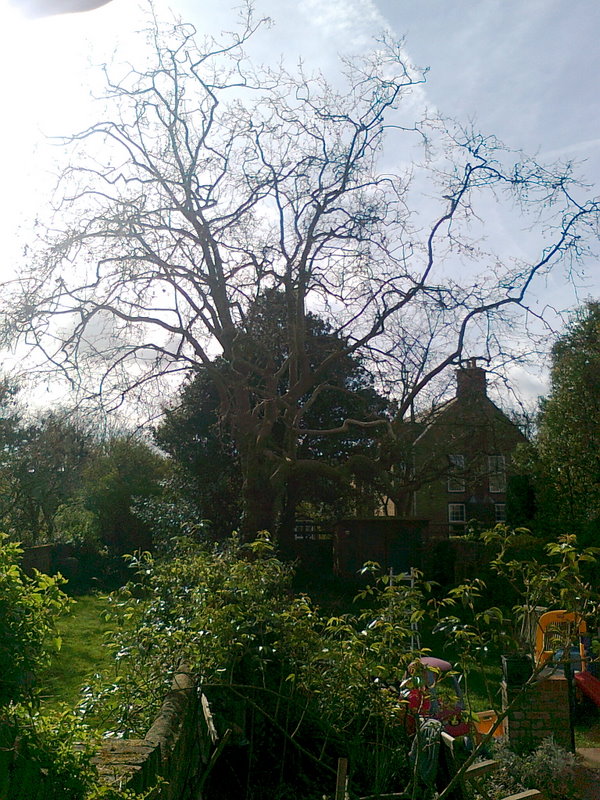
| Plane 45ft Reduced by 30% £400 | 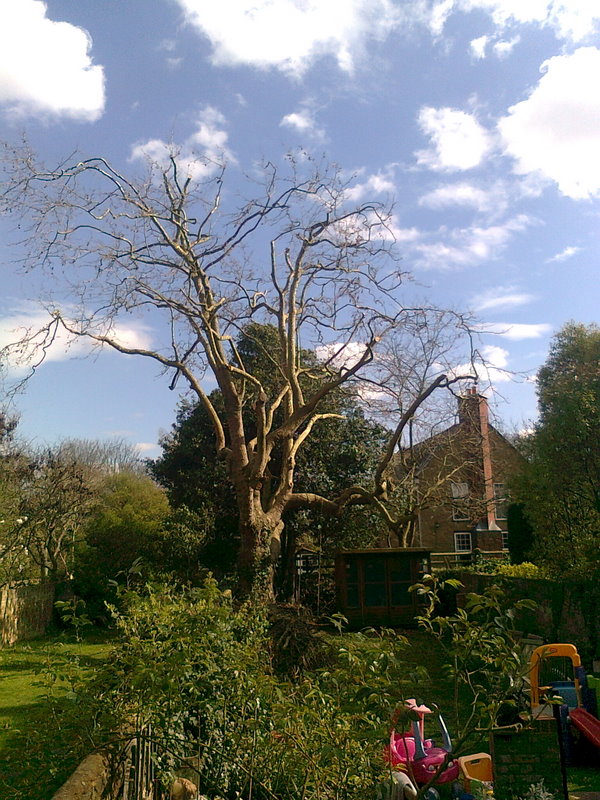
|
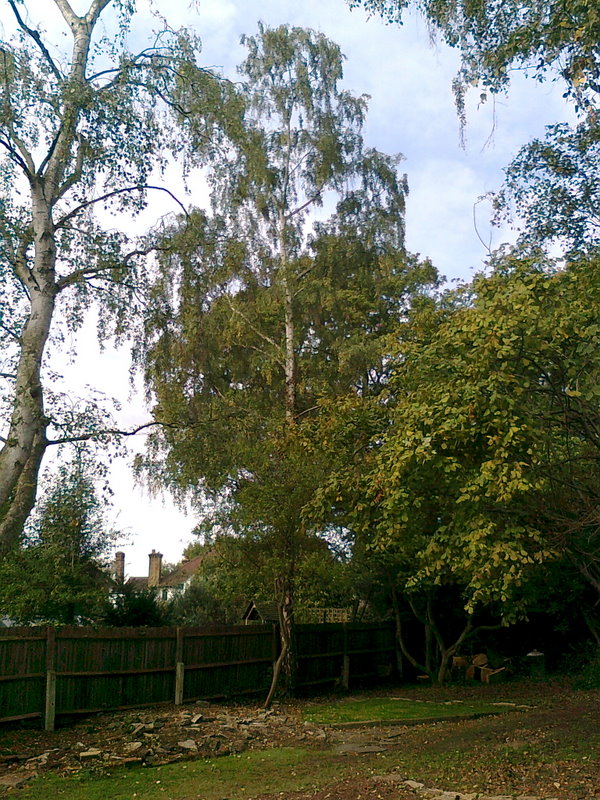
| Birch 50ft Felled to ground £400 | 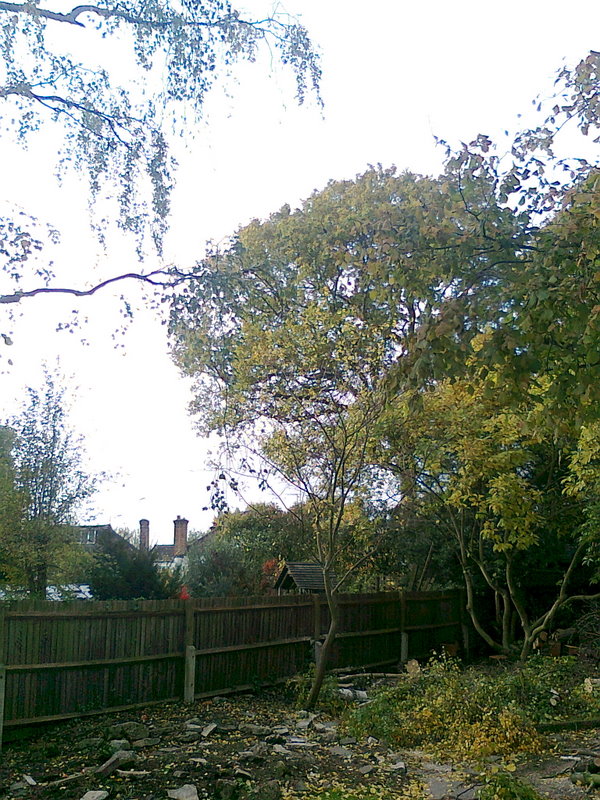
|
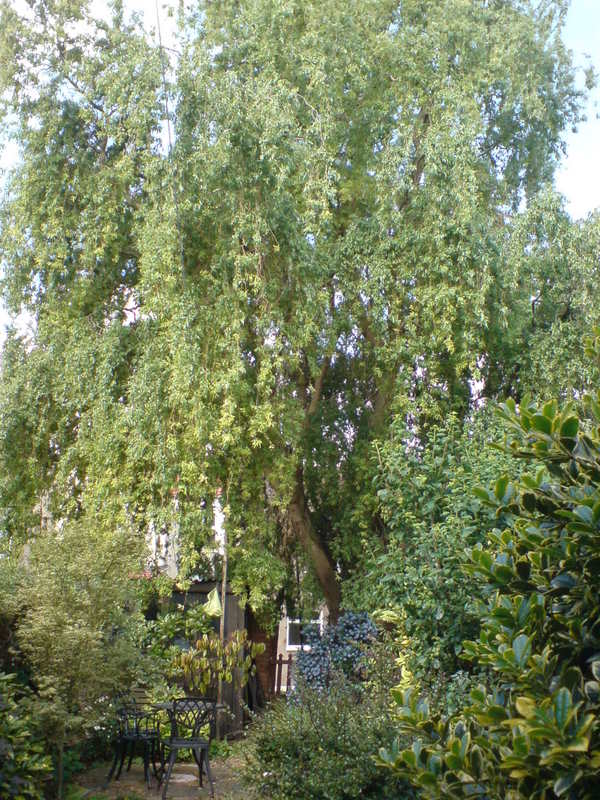
| Willow 50ft Reduced by 30% and thinned £800 | 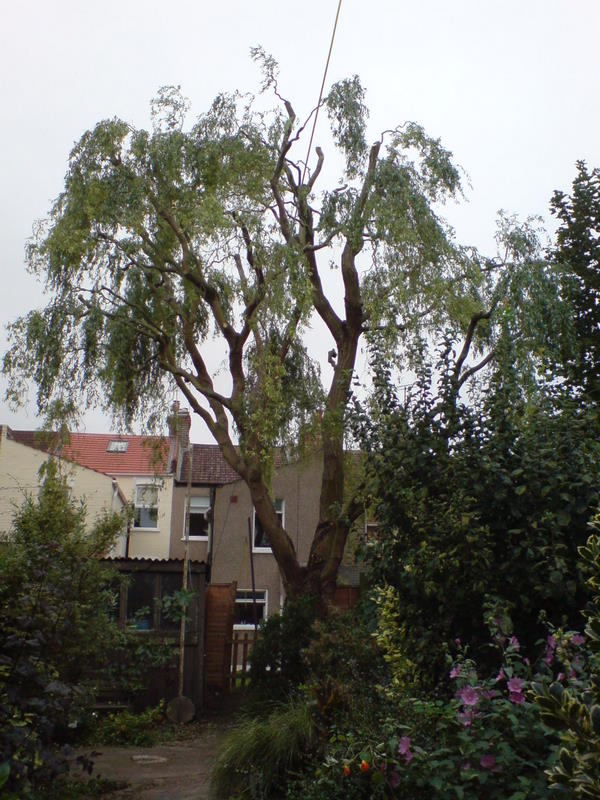
|
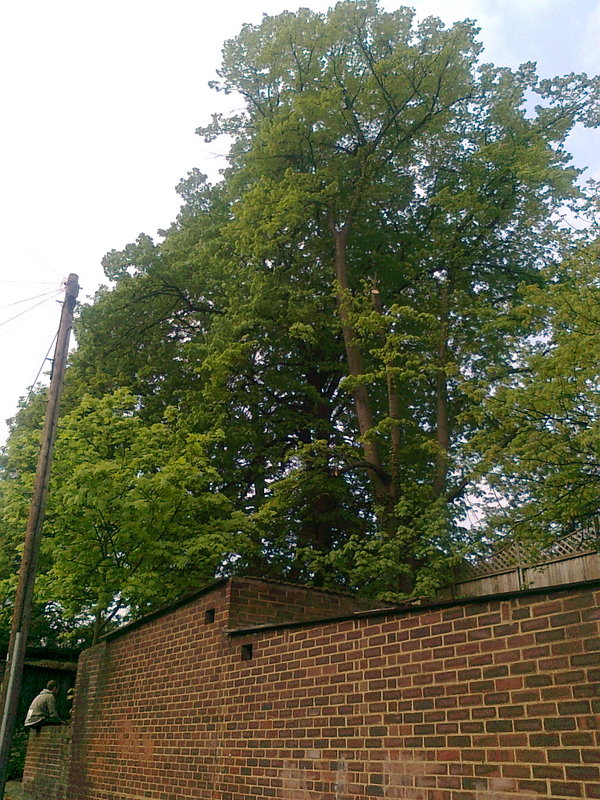
| Pair of rotten limes 80ft Pollarded at 30ft £2,200 | 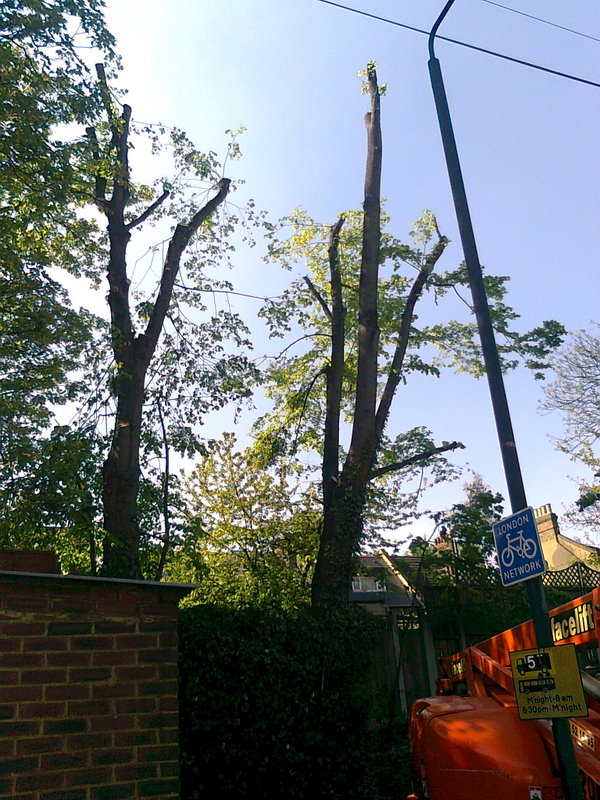
|